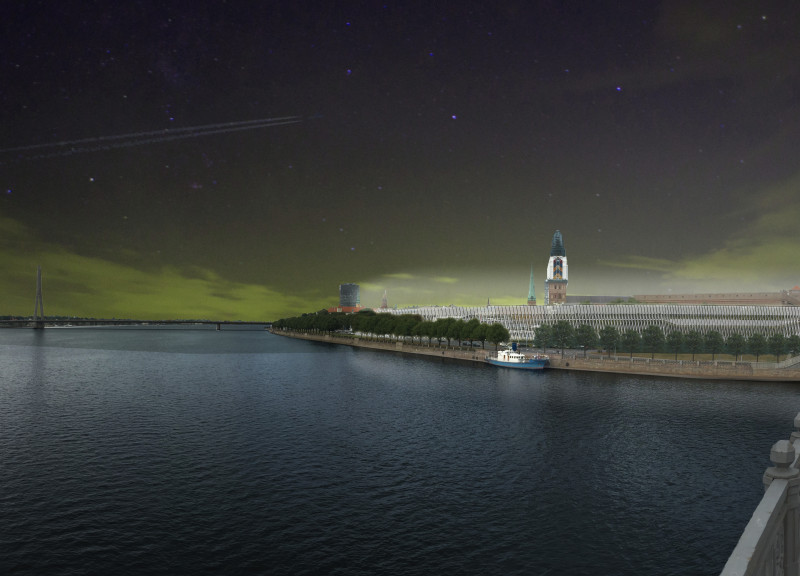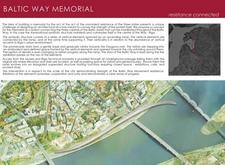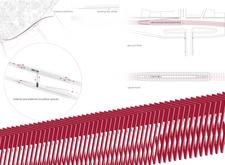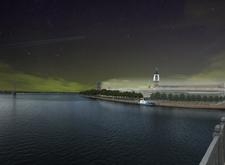5 key facts about this project
### Overview
The Baltic Way Memorial is situated in Riga, Latvia, and is designed to commemorate the non-violent protest known as the Baltic Way, which united the three Baltic states of Lithuania, Latvia, and Estonia in their quest for freedom. The memorial serves as a connective element between the capitals, symbolizing values of cooperation, unity, and progress. The project integrates historical narratives with contemporary design, creating a space that invites reflection and engagement with the region's shared heritage.
### Spatial Strategy and User Engagement
The design features a sequence of vertical elements that rise from a gently sloping promenade, culminating in a ramp that leads to the Daugava River. This ramp not only enhances the physical experience of ascending but also symbolizes the progression toward unity and hope. The elongated vertical structures function as pillars of strength, supporting an exhibition space that recounts the narratives of the Baltic Way through informative panels.
Connectivity is enhanced through an underground passage linking the memorial plaza to the nearby Riga Technical University, promoting ease of access for both visitors and the local community. The design also includes thoughtfully planned external spaces for gathering and reflection, allowing visitors to engage with the memorial while interacting with the urban environment. The promenade facilitates an immersive exploration, reinforcing the memorial's role as a civic space.
### Materiality and Contextual Integration
The proposed design suggests the use of materials that reflect the themes of resilience and unity. Concrete may be employed for structural components, while glass could be utilized to introduce natural light into exhibition areas, fostering a sense of openness. Steel is anticipated for the vertical elements, promoting a modern aesthetic, and local stones may be incorporated to provide a tangible connection to the Baltic region's heritage.
The overall design emphasizes the memorial's connection to the living city, with topographical considerations that guide visitors from street level to the memorial’s elevated features. This integration underscores the intention to create a vibrant space that resonates with the historical significance of the Baltic Way protest while serving the present community.






















































